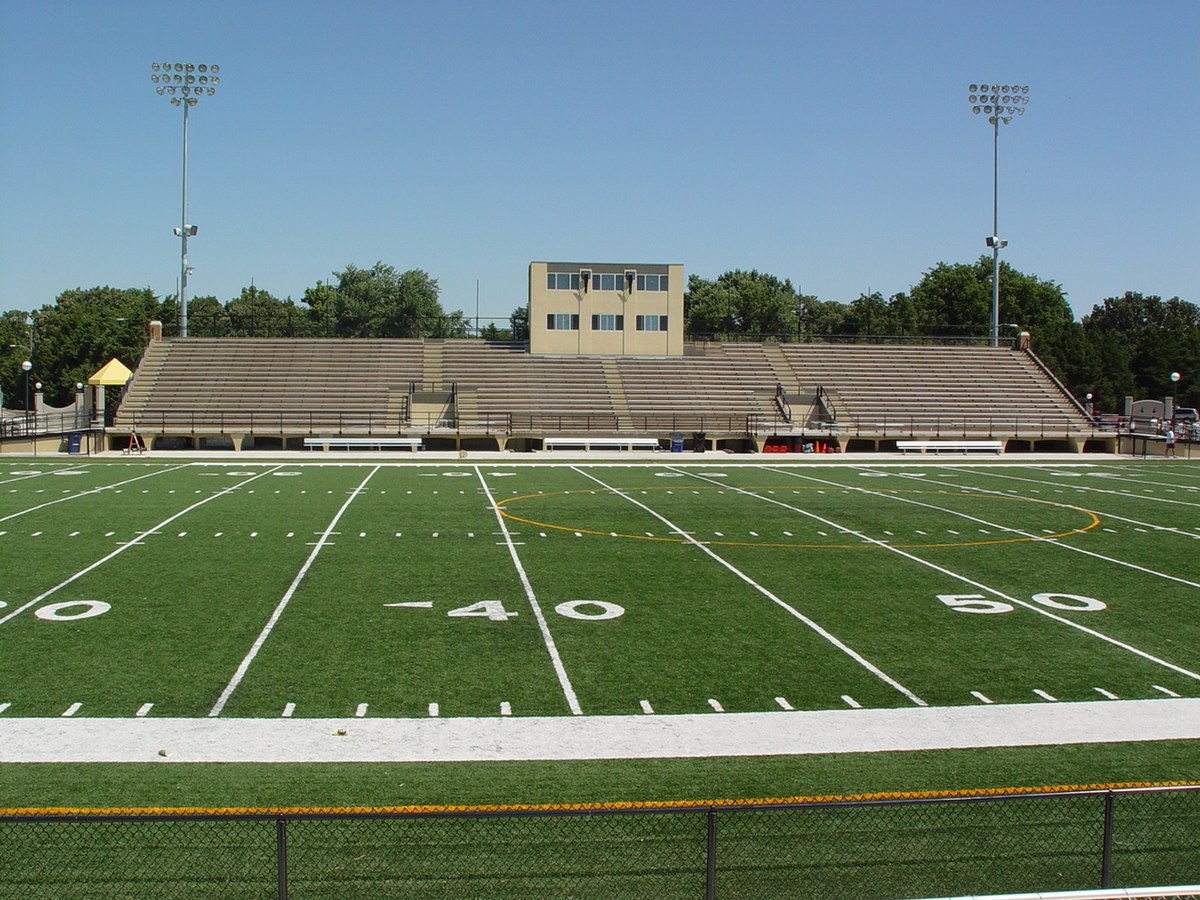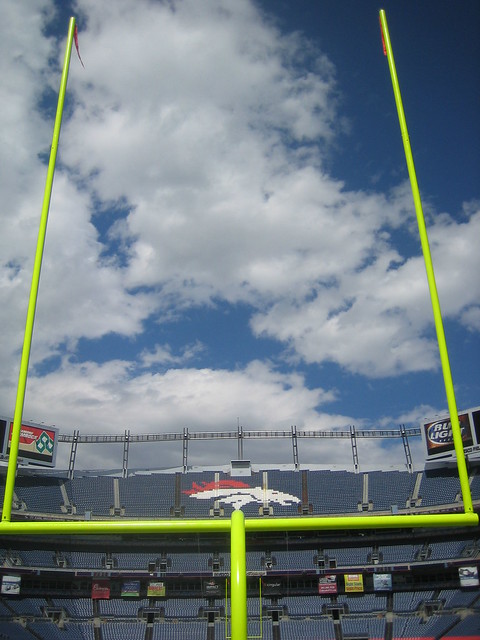The Field
 Typical football field markings
Typical football field markingsThe college football playing field measures 160 feet wide and 100 yards long, with an additional 10 yards on each end designated as the End Zone. The field is covered with natural grass or an artificial turf.
There are short, white line markers along the sides of the field to mark every yard, and white lines across the field every 5 yards.
The marks every 10 yards are labeled, with 50 yards being in the center of the field, then decreasing numbers (40, 30, 20, 10) with an arrow pointing toward the end zone on both sides of the 50.
The “0” yard line is the goal line, the line that has to be crossed to score. The entire painted goal line is in the end zone, so the ball only has to touch the goal line to be considered a touchdown.
60 feet from each sideline is another set of short, white lines indicating one yard each. These are called hash marks, and are 40 feet apart. The ball must be placed on or between the hash marks before a play can start.
The spot where the ball stops on the previous play determines whether the ball is placed on a hash mark or the center of the field for the next play. The ball is placed on whichever is closest.
At each corner of the end zone are small, soft, flexible posts measuring 4 inches square and 18 inches tall. They are bright orange or red and called pylons.
In college football there is a camera in each pylon pointing down the goal line. The ball must cross the goal line directly over or inside the pylon to score a touchdown. The pylon camera helps to clarify if the ball actually crosses the goal line when the referees can’t see the ball clearly.
 Goalposts must be painted either white or yellow
Goalposts must be painted either white or yellowThere are goal posts on each goal line. The horizontal cross bar, directly above the goal line, is 10 feet off the ground and is 18 ½ feet long. The uprights on each end of the cross bar are at least 35 feet high.
There is usually a 4 inch by 42 inch streamer attached at the top to help the players and coaches determine wind direction and speed. The goal posts must be painted white or yellow.
The end zone is at each end of the field and measures 10 feet deep and the width of the field. The ball must be carried or kicked into, or caught by a player in this area to score.
On a pass play, the receiver must get one foot down (touching the ground) inside the end zone and not touching the white line around it. The white line around the sides and back of the end zone are deemed out of bounds.
Though not marked on the field, the area from the 20-yard line to the goal line is called the red zone. This is an area closest to the goal line from which the team is most likely to score.
Statistics are kept for the percentage of time the team not only scores but whether they score a touchdown or a field goal. This can indicate the efficiency of the team or an area where improvement is needed.
Televised games have other markings on the field that spectators in the stadium cannot see. There is a blue or black line to indicate the line of scrimmage (where the ball is placed before a play begins). There is a yellow line that marks how far the team has to go to make a first down. In addition, there is a green and yellow line that designates the furthest spot from which the team kicker can make a field goal (see Scoring).
A team logo may be painted in the center of the field as long as it does not interfere with the field markings.